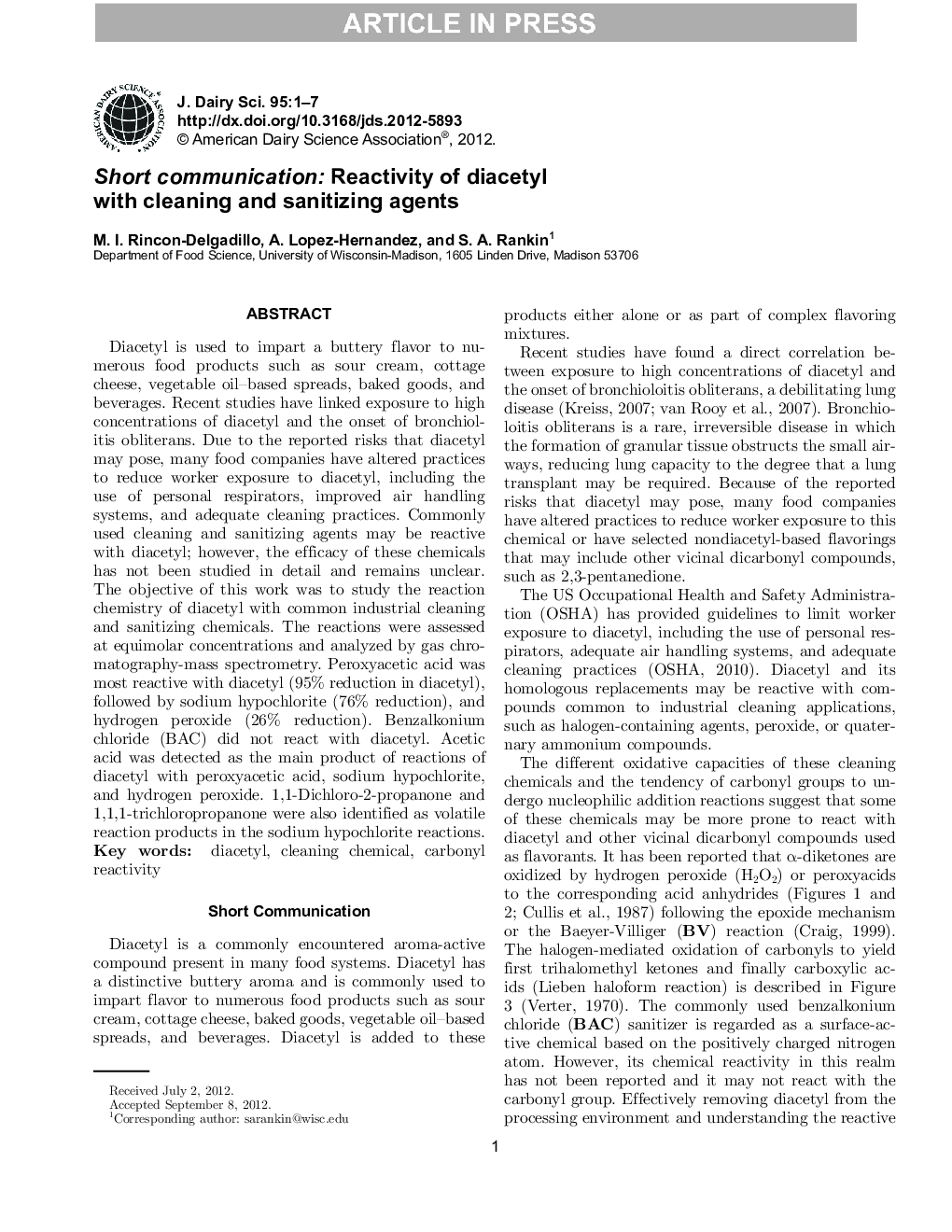| کد مقاله | کد نشریه | سال انتشار | مقاله انگلیسی | نسخه تمام متن |
|---|---|---|---|---|
| 10980501 | 1108071 | 2013 | 7 صفحه PDF | دانلود رایگان |
عنوان انگلیسی مقاله ISI
Short communication: Reactivity of diacetyl with cleaning and sanitizing agents
ترجمه فارسی عنوان
ارتباط کوتاه: واکنش پذیری دی سکتیل با عوامل تمیز کردن و ضد عفونی
دانلود مقاله + سفارش ترجمه
دانلود مقاله ISI انگلیسی
رایگان برای ایرانیان
کلمات کلیدی
دیاستیل، تمیز کردن مواد شیمیایی واکنش پذیری کربنیل،
موضوعات مرتبط
علوم زیستی و بیوفناوری
علوم کشاورزی و بیولوژیک
علوم دامی و جانورشناسی
چکیده انگلیسی
Diacetyl is used to impart a buttery flavor to numerous food products such as sour cream, cottage cheese, vegetable oil-based spreads, baked goods, and beverages. Recent studies have linked exposure to high concentrations of diacetyl and the onset of bronchiolitis obliterans. Due to the reported risks that diacetyl may pose, many food companies have altered practices to reduce worker exposure to diacetyl, including the use of personal respirators, improved air handling systems, and adequate cleaning practices. Commonly used cleaning and sanitizing agents may be reactive with diacetyl; however, the efficacy of these chemicals has not been studied in detail and remains unclear. The objective of this work was to study the reaction chemistry of diacetyl with common industrial cleaning and sanitizing chemicals. The reactions were assessed at equimolar concentrations and analyzed by gas chromatography-mass spectrometry. Peroxyacetic acid was most reactive with diacetyl (95% reduction in diacetyl), followed by sodium hypochlorite (76% reduction), and hydrogen peroxide (26% reduction). Benzalkonium chloride (BAC) did not react with diacetyl. Acetic acid was detected as the main product of reactions of diacetyl with peroxyacetic acid, sodium hypochlorite, and hydrogen peroxide. 1,1-Dichloro-2-propanone and 1,1,1-trichloropropanone were also identified as volatile reaction products in the sodium hypochlorite reactions.
ناشر
Database: Elsevier - ScienceDirect (ساینس دایرکت)
Journal: Journal of Dairy Science - Volume 96, Issue 1, January 2013, Pages 105-111
Journal: Journal of Dairy Science - Volume 96, Issue 1, January 2013, Pages 105-111
نویسندگان
M.I. Rincon-Delgadillo, A. Lopez-Hernandez, S.A. Rankin,
